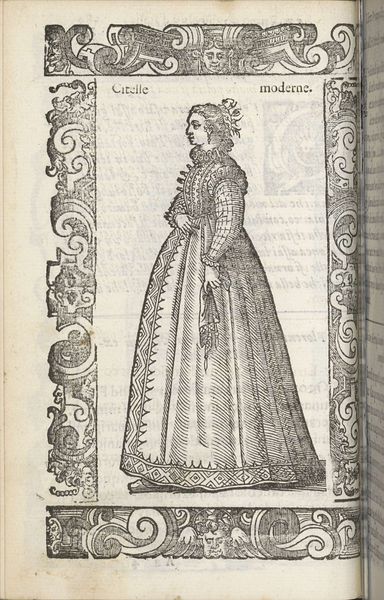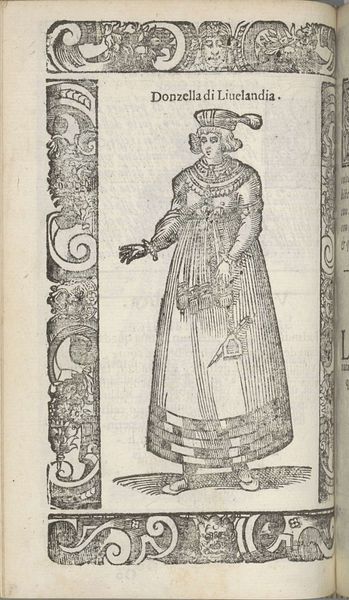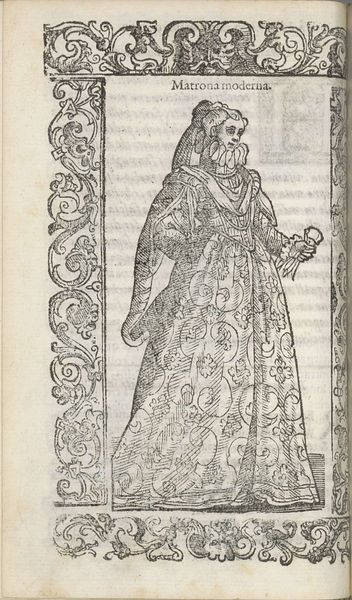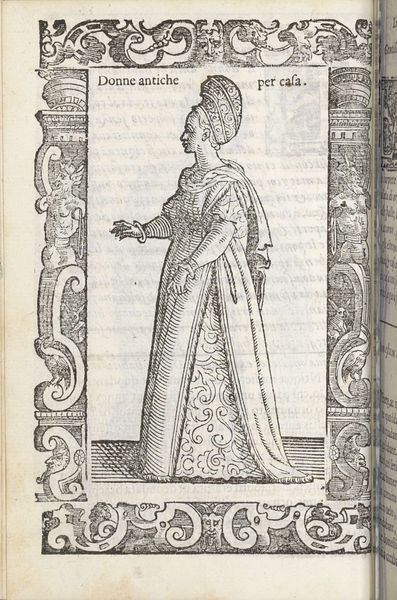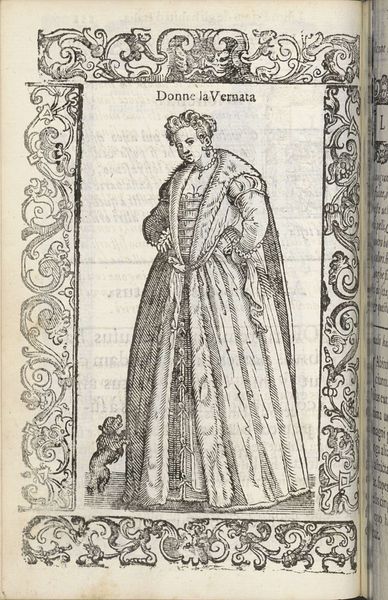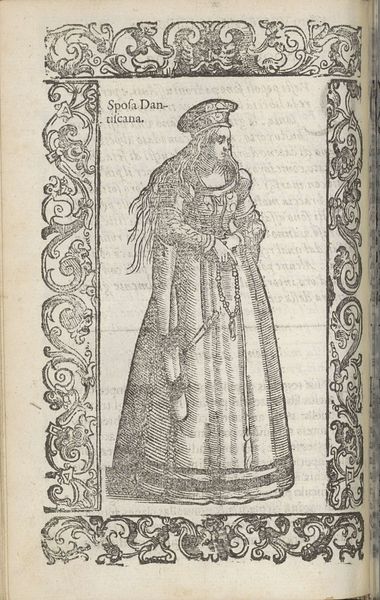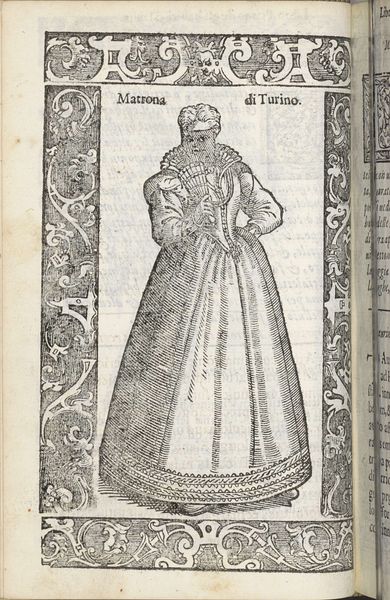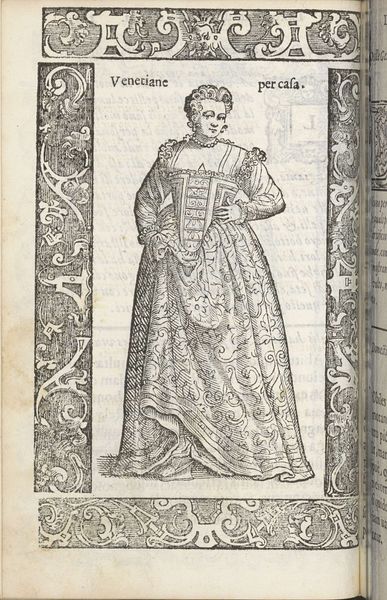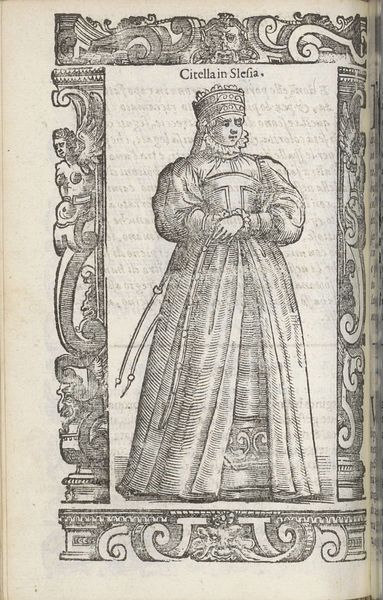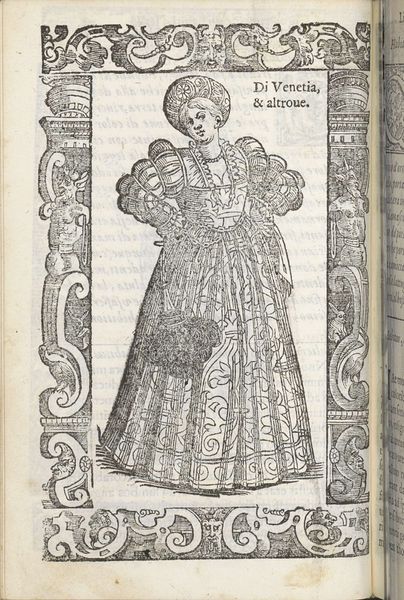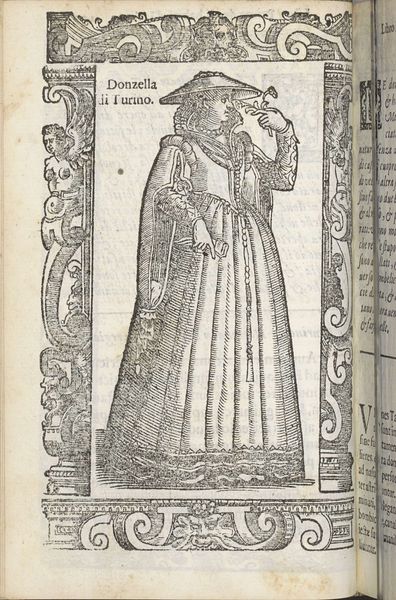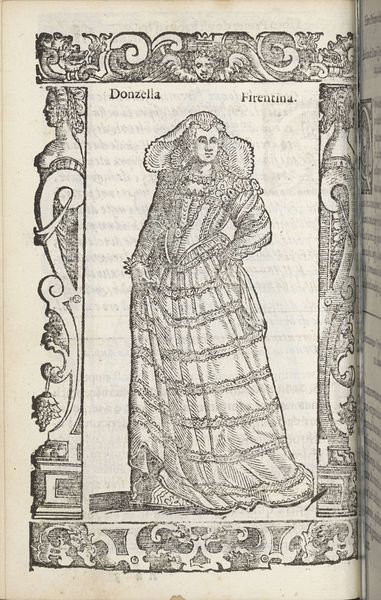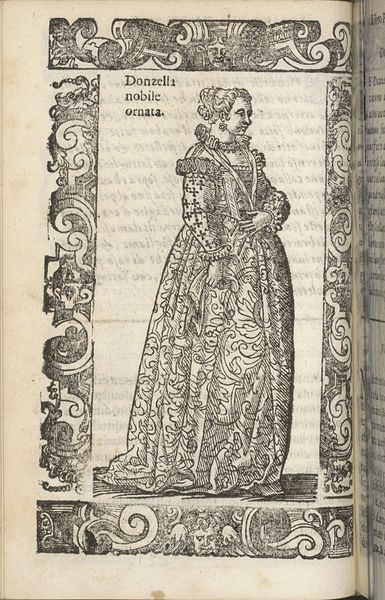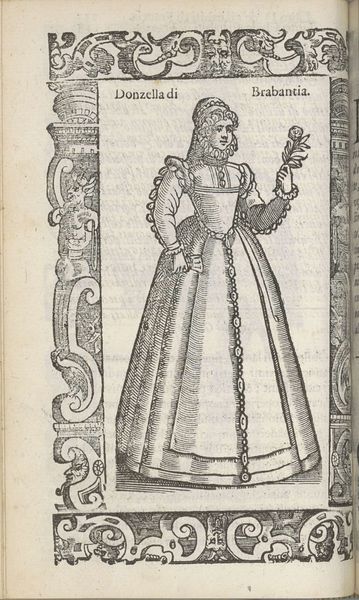
drawing, ink, engraving
#
portrait
#
drawing
#
pen drawing
#
pen sketch
#
old engraving style
#
sketch book
#
mannerism
#
11_renaissance
#
personal sketchbook
#
ink
#
pen-ink sketch
#
pen work
#
sketchbook drawing
#
sketchbook art
#
engraving
#
initial sketch
Dimensions: height 167 mm, width 125 mm
Copyright: Rijks Museum: Open Domain
Curator: My first impression of this engraving is one of formality, of reserved dignity. Editor: Yes, there is a stiffness to it. The woman's gaze is averted, almost melancholic. Given the title, "Matrona nobile ornata," or "Noble Adorned Matron", from 1598, this feels less celebratory and more about presenting a carefully constructed image of status and adherence to societal expectations. Curator: The image, crafted by Christoph Krieger, utilizes pen and ink to create an intricate network of lines. Notice how the shading is achieved through dense hatching, a technique reminiscent of early printmaking. Editor: That's interesting, given the historical context. Krieger was working during a period of intense religious and political upheaval, so perhaps the portrait's solemnity reflects the anxieties of the time. As an activist, I see portraits like these as reflections of limited opportunity available to upper class women in this historical moment, despite their apparent finery. Curator: Indeed. Her attire speaks volumes. The elaborate ruff collar, the voluminous gown...these are potent signifiers of wealth and belonging. The artist draws attention to her elevated position and power with deliberate embellishments and attention to detail. Look, the symmetry is disrupted to accommodate a small volume she’s holding, indicating literacy and privilege, if subtly. Editor: Yet, what agency did she truly possess? We see the visual markers of status, but I am thinking of the constraints of gender roles in the late 16th century and how they might have shaped her life. The artwork as a document offers social cues and an opportunity for interrogation. Curator: I understand that concern, but I see the composition and use of line offering visual insights beyond strict socio-historical interpretations. It shows the Mannerist artistic style becoming ever more stylized and refined through ornamental presentation. Consider, for example, the almost surreal framing elements of female caryatids who flank either side, alongside baroque embellishments above and below. It suggests a dialogue not just with reality, but with an imagined symbolic landscape of the self. Editor: Maybe. Perhaps it's the nature of portraits themselves that invites such questions, capturing both the surface and hinting at the complex realities beneath. Curator: Ultimately, I think, Krieger provides a glimpse into both the visible markers of power and status within a historical moment, and offers up elements which hint at so much more for consideration. Editor: For me, it's a somber visual record of social position but, perhaps even despite itself, one that raises many important questions.
Comments
No comments
Be the first to comment and join the conversation on the ultimate creative platform.
